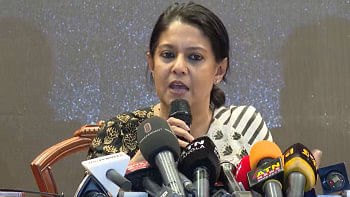Why go around elbow to get to the nose?

The government announced a 2 percent subsidy on remittances in the FY20 budget and allocated Tk 3,060 crore for this purpose.
In Bangladesh, remittances have a large development impact because they are 2.3 times the net official development assistance, foreign direct and portfolio investments combined.
Remittances reached $16.4 billion in FY19, a new historic height in nominal terms. A recent survey by the General Economics Division showed that 91 percent of remittance recipients are above the upper poverty line.
The equity justification for the subsidy is therefore not compelling. The efficiency justification is hard to construct given the absence of any obvious positive externalities that can be directly associated with international remittances.
The above questions are academic since the decision to subsidise has already been made. The more pertinent question now is through what administrative mechanism will the subsidy be delivered?
On August 6, the Bangladesh Bank (BB) issued a circular detailing the implementation modalities of the subsidy. This clarifies the apprehensions expressed by many regarding the subsidy delivery mechanism and the associated costs as well as risks. At the same time, it leaves a few points to ponder.
Remittances not exceeding $1,500 will get the cash subsidy without any questions asked. Remitters exceeding this limit will have to submit appropriate documentation such as appointment letters, passport, business licence if the remitter is not a wage employee etc. on the sources of their income to be eligible for this subsidy.
We do not know how the $1,500 threshold was fixed, but perhaps the threshold was motivated by concerns about abuse of the subsidy by sending money abroad and transferring it back to the country as remittances or by transferring as remittances export earnings not eligible for any cash subsidy or export earnings getting less than 2 percent cash subsidy.
What will deter such abusers from sending these in different instalments through different banks? The average cost of transferring $200 remittances in the South Asia region is 5 percent, according to the World Bank’s April 2019 brief on migration and remittances.
This can be a deterrent, but the fees decrease with increase in the amount sent. Moreover, how difficult will it be to obtain fake business licence by those who may attempt to take undue advantage of the cash subsidy?
Honest remitters on the other hand may be discouraged to send over $1,500 in one transfer due to the documentation requirements. This could adversely affect the volume of remittance inflow.
How will banks get the money for paying the cash subsidy to the recipient households? BB will provide imprest advance to banks, equivalent to three months’ remittances based on previous year’s average monthly remittances plus 10 percent growth.
Somebody in BB will have to verify whether the banks are accurately reporting the previous year’s remittances through their banks.
There is obviously an incentive to maximise the imprest advance, since it is costless and since banks will have to pay the subsidy even if the imprest balances are exhausted. In case of the latter, the banks will accrue a claim on the BB on which they will earn no interest.
Banks will have to maintain a separate taka account on cash subsidy disbursements, prepare documentation (Form Ka every quarter and Form Kha every month) for the appropriate BB departments and preserve these documents for audit for at least the next three years.
Bank management will also have to ensure that their staff fully comply with the rules of disbursing the cash subsidy to avoid debits in their reserves with the BB. Clearly, all these mean an increase in the cost of doing remittance transactions for the banks, a cost against which they earn no direct benefits.
Remittance recipients will have to pay back the cash subsidy to the disbursing banks if for any reason they must return the remittances to the sender. This means loans remitted by senders to the recipients are not eligible for cash subsidy if the loan repayments are remitted back.
If the repayments are made locally to the relatives or friends of the loan providing remitter, the cash subsidy received will not need to be paid back since banks have no way of monitoring such behaviour.
However, this requirement may create complications for those who send money abroad to support children, relatives or friends as allowed under existing BB regulations.
They may be required to provide evidence that they did not receive any remittance subsidy.
One cannot help but wonder why we could not let a correction in the currently overvalued exchange rate to deliver the same, or perhaps even more, augmentation of the income of remittance receiving households.
This would have dispensed with all administrative hassles on the part of BB and the remittance dealing banks.
Exchange rate correction has other benefits such as making exports and domestic import substitutes more price competitive and stopping leakage of taka liquidity from the banking system resulting from BB’s dollar sales to defend the taka.
Yes, there is no free lunch. Cost of imports will rise, thus creating the risk of higher inflation. If this inflation tax is assessed to be too onerous economically or politically, it can be managed through appropriate fiscal response.
The author is an economist.


 For all latest news, follow The Daily Star's Google News channel.
For all latest news, follow The Daily Star's Google News channel. 



Comments